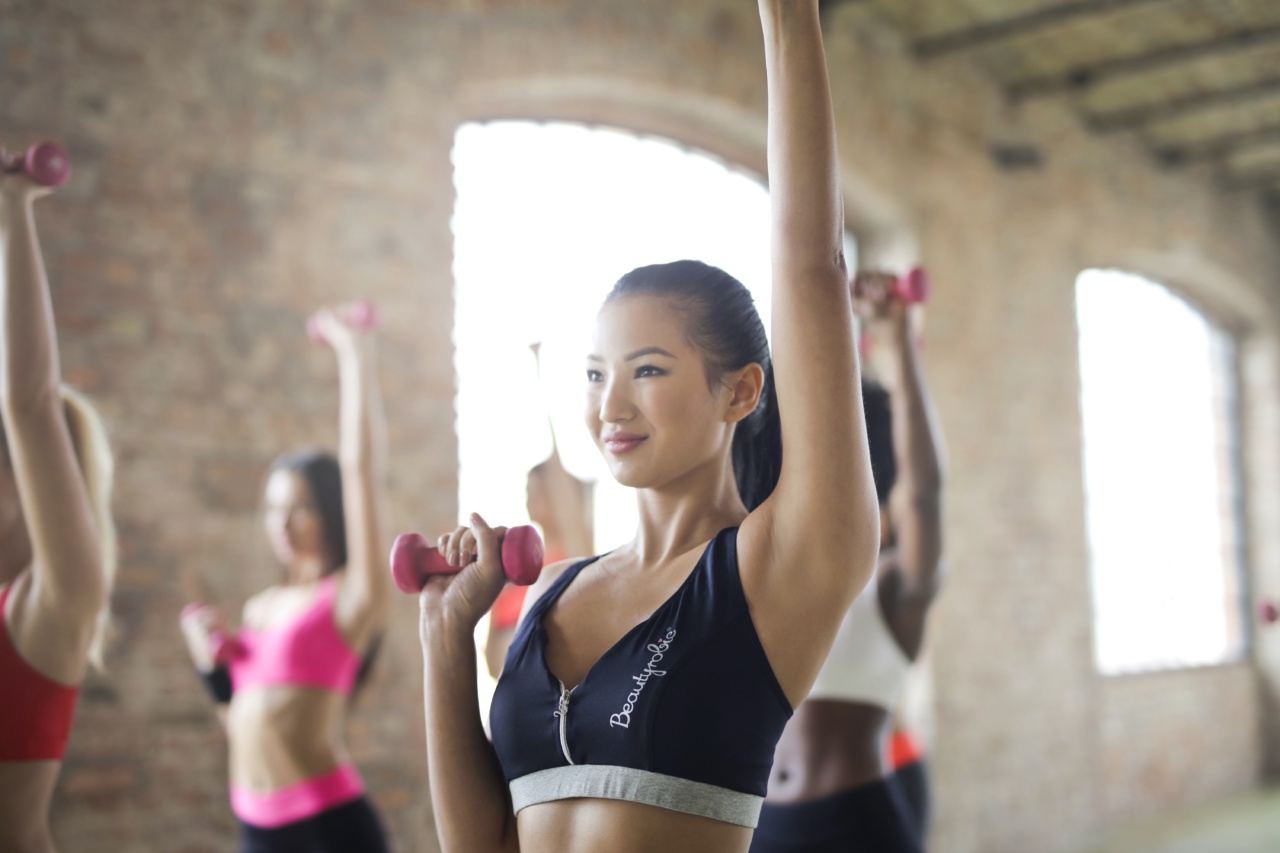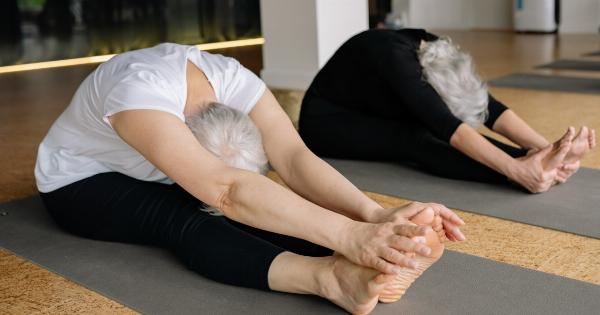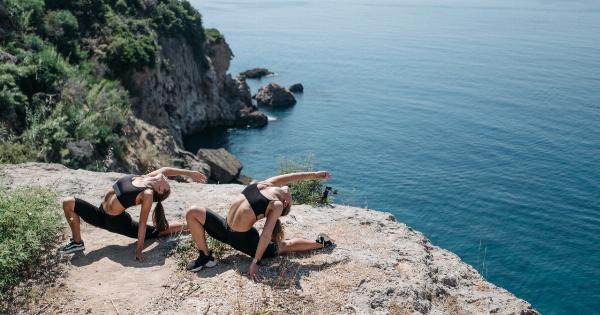Urinary incontinence is a common issue that affects millions of people around the world. It can disrupt daily activities, lower self-esteem, and impact one’s quality of life.
While there are various treatment options available, exercises play a crucial role in managing and improving bladder control. Below, we have compiled a list of the top 30 exercises for dealing with urine leakage.
1. Kegels
Kegel exercises are specifically designed to strengthen the pelvic floor muscles, which play a crucial role in urinary control. To perform a Kegel exercise, squeeze the muscles that you would use to stop the flow of urine.
Hold for a few seconds and then release. Repeat this multiple times throughout the day.
2. Squats
Squats are not only great for building lower body strength but can also help improve bladder control. Stand with your feet shoulder-width apart, squat down as if you are sitting back into an imaginary chair, and then return to a standing position.
Make sure to engage your pelvic floor muscles during the movement.
3. Bridge Pose
Lie on your back with your knees bent and feet flat on the floor. Lift your hips off the ground, creating a straight line from your knees to your shoulders. Hold for a few seconds and then lower your hips back down.
The bridge pose helps strengthen the pelvic floor and glute muscles.
4. Abdominal Curls
Abdominal curls, also known as crunches, can indirectly improve bladder control by strengthening the core muscles. Lie on your back with your knees bent and feet flat on the floor.
Place your hands behind your head and lift your upper body towards your knees. Lower back down and repeat.
5. Plank
The plank exercise targets the core muscles, including the pelvic floor. Start in a push-up position with your forearms resting on the ground. Engage your core and hold your body in a straight line for as long as possible.
Make sure to breathe steadily throughout the exercise.
6. Pilates
Pilates exercises focus on improving core strength, flexibility, and posture. Many Pilates movements engage the pelvic floor muscles, making it an effective practice for managing urine leakage.
Consider joining a Pilates class or following online tutorials.
7. Leg Raises
Lie on your back with your legs straight and together. Slowly lift one leg off the ground while keeping it straight. Hold for a few seconds and then lower it back down. Repeat with the other leg.
Leg raises help strengthen the lower abdominal and pelvic floor muscles.
8. Yoga
Yoga combines physical poses, breathing techniques, and meditation. Certain yoga asanas (poses), such as the pelvic floor exercises, can significantly improve bladder control.
Look for yoga classes that specifically focus on pelvic health or consult with a qualified yoga instructor.
9. Lunges
Lunges target the lower body muscles, including the pelvic floor. Stand with one foot forward and the other foot back, keeping both feet hip-width apart. Bend the knees and lower your body down, making sure the front knee stays directly above the ankle.
Repeat on the other leg.
10. Flutter Kicks
Lie on your back with your legs straight and together. Lift both legs a few inches off the ground and alternate kicking them up and down in a fluttering motion.
Flutter kicks strengthen the lower abdominal and pelvic floor muscles, thus improving urinary control.
11. Side Plank
The side plank exercise targets the oblique muscles, which are part of the core. Start by lying on your side and prop yourself up on one forearm, with your elbow directly under your shoulder.
Lift your hips off the ground, creating a straight line from your head to your feet. Repeat on the other side.
12. Cycling
Cycling, whether outdoors or on a stationary bike, is an excellent cardiovascular exercise that also engages the pelvic floor muscles. Regular cycling can improve bladder control and overall muscle strength.
Start with shorter rides and gradually increase the duration and intensity.
13. Hip Thrusts
Begin by sitting on the edge of a chair or bench with your feet flat on the floor. Lean back slightly and lift your hips off the seat, pushing your weight into your heels. Hold for a few seconds and then lower your hips back down.
This exercise targets the glutes and pelvic floor muscles.
14. Step-Ups
Find a step or sturdy platform and step onto it with one foot, driving your weight through the heel. Lift your body up until the front leg is straight. Step back down and repeat with the other leg.
Step-ups engage the lower body muscles, including the pelvic floor.
15. Standing Pelvic Tilts
Stand with your feet hip-width apart and place your hands on your hips. Tilt your pelvis forward, engaging your abdominal and pelvic floor muscles. Hold for a few seconds and then tilt your pelvis backward.
Repeat several times, focusing on the controlled movement.
16. Standing Hip Abduction
Stand upright near a wall or chair for support. Lift one leg out to the side, away from your body, keeping it straight. Hold for a few seconds and then lower it back down. Repeat with the other leg.
Standing hip abduction helps strengthen the hip and pelvic floor muscles.
17. Glute Bridges with Resistance Band
Place a resistance band above your knees and lie on your back with your feet flat on the ground, hip-width apart. Engage your core and glutes to lift your hips off the ground, creating a straight line from your knees to shoulders.
Hold for a few seconds and then lower your hips back down.
18. Clamshells
Lie on your side with your knees bent and stacked on top of each other. Keep your feet together and lift the top knee away from the bottom knee, like the opening of a clamshell. Hold for a few seconds and then lower it back down.
Clamshells target the hip and pelvic floor muscles.
19. Inner Thigh Squeezes
Use a small ball or cushion and place it between your inner thighs. Squeeze the ball with your inner thigh muscles, holding for a few seconds before releasing.
Repeat this exercise multiple times to strengthen the muscles in your inner thighs and pelvic floor.
20. Supermans
Lie face down on a mat or comfortable surface with your legs together and arms extended overhead. Lift your arms, chest, and legs off the ground simultaneously, using your lower back muscles. Hold for a few seconds and then lower back down.
Supermans strengthen the lower back and glute muscles.
21. Deadlifts
Deadlifts primarily target the hamstrings, glutes, and lower back muscles while also engaging the pelvic floor. Stand with your feet hip-width apart, holding a weight or barbell in front of your thighs.
Bend at the hips and lower the weight towards the ground, keeping your back straight. Return to a standing position.
22. Resistance Band Pull-Aparts
Hold a resistance band at chest height with your arms extended straight in front of you. Pull the band apart, squeezing your shoulder blades together, and then slowly release.
Repeat this exercise to improve posture and strengthen the upper back muscles, which indirectly support bladder control.
23. Standing Calf Raises
Stand near a wall or chair for support. Rise up onto your toes, lifting your heels off the ground as high as possible. Hold for a few seconds and then lower your heels back down. Standing calf raises help improve lower body strength and balance.
24. Swimming
Swimming is a low-impact exercise that engages the entire body, including the pelvic floor. The water provides resistance, making it an effective workout for strengthening muscles and improving overall bladder control.
Consider incorporating swimming into your exercise routine.
25. Child’s Pose
Start on your hands and knees and slowly sit back onto your heels. Extend your arms forward and let your forehead rest on the ground. Take deep breaths and allow your body to relax.
Child’s pose helps release tension in the pelvic floor and promotes relaxation.
26. Jumping Jacks
Jumping jacks are a cardiovascular exercise that also engages multiple muscle groups, including the pelvic floor. Stand with your feet together and arms by your sides. Jump your feet out to the sides while simultaneously raising your arms above your head.
Jump back to the starting position.
27. Pilates Ball Squeeze
Place a small Pilates ball or cushion between your knees. Squeeze the ball using your inner thigh muscles, holding for a few seconds before releasing.
Repeat several times to strengthen the inner thighs and pelvic floor muscles, which aid in bladder control.
28. Tai Chi
Tai Chi is an ancient Chinese martial art that combines slow, flowing movements with deep breathing and relaxation.
Certain Tai Chi exercises involve gentle weight shifting and pelvic floor engagement, which can prove beneficial in managing urine leakage. Join a Tai Chi class or follow online tutorials.
29. Step Routine
Step routines involve stepping on and off a raised platform, engaging the lower body muscles. By performing step exercises, you can improve muscle strength and indirectly enhance bladder control.
Consider joining a step aerobics class or follow online step routines.
30. Breath Control Exercises
Practicing breath control exercises, such as diaphragmatic breathing or deep belly breathing, can assist in managing urine leakage.
These exercises help strengthen the diaphragm, core muscles, and pelvic floor while promoting relaxation and overall control of the bladder.































